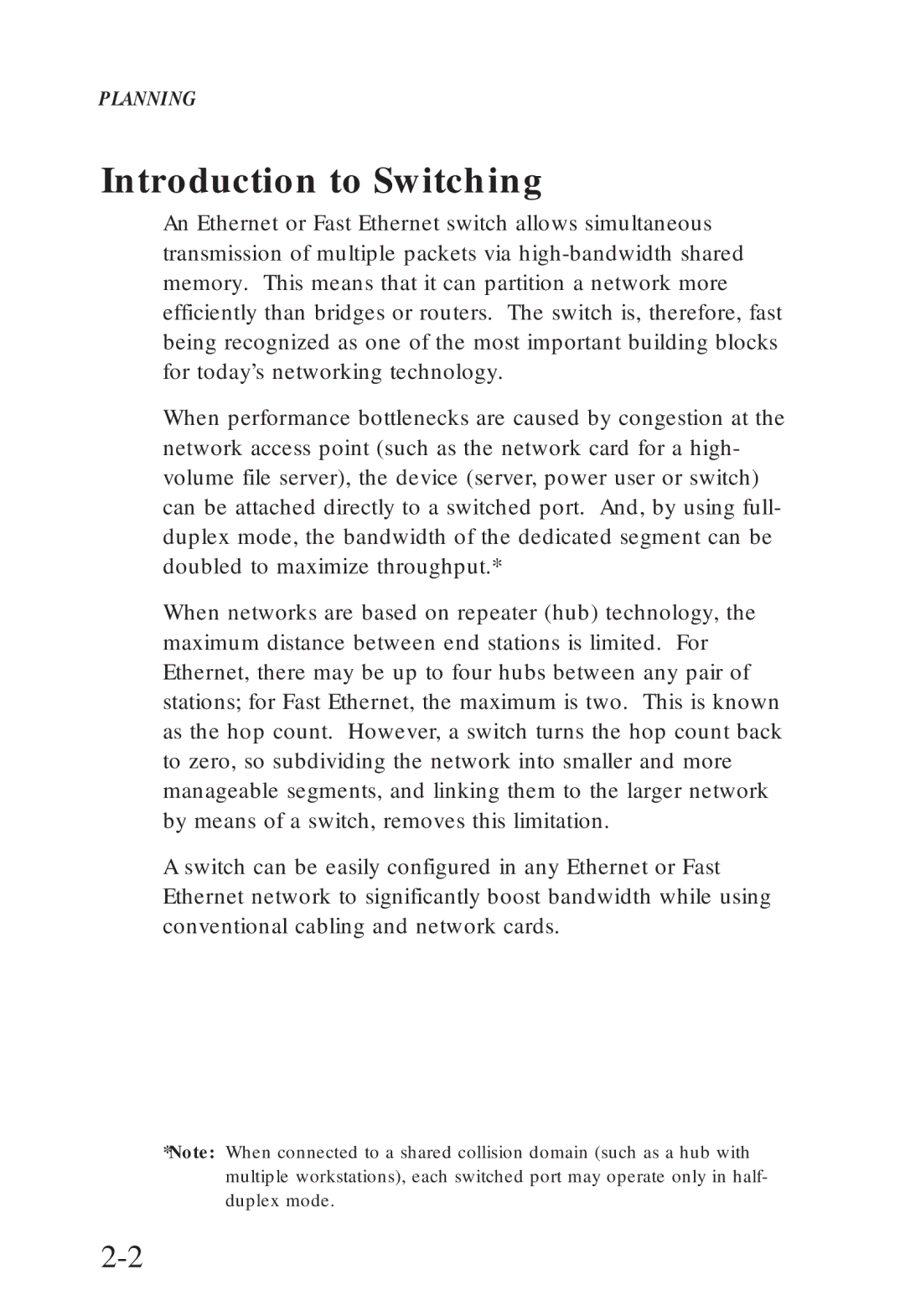PLANNING
Introduction to Switching
An Ethernet or Fast Ethernet switch allows simultaneous transmission of multiple packets via
When performance bottlenecks are caused by congestion at the network access point (such as the network card for a high- volume file server), the device (server, power user or switch) can be attached directly to a switched port. And, by using full- duplex mode, the bandwidth of the dedicated segment can be doubled to maximize throughput.*
When networks are based on repeater (hub) technology, the maximum distance between end stations is limited. For Ethernet, there may be up to four hubs between any pair of stations; for Fast Ethernet, the maximum is two. This is known as the hop count. However, a switch turns the hop count back to zero, so subdividing the network into smaller and more manageable segments, and linking them to the larger network by means of a switch, removes this limitation.
A switch can be easily configured in any Ethernet or Fast Ethernet network to significantly boost bandwidth while using conventional cabling and network cards.
*Note: When connected to a shared collision domain (such as a hub with multiple workstations), each switched port may operate only in half- duplex mode.
